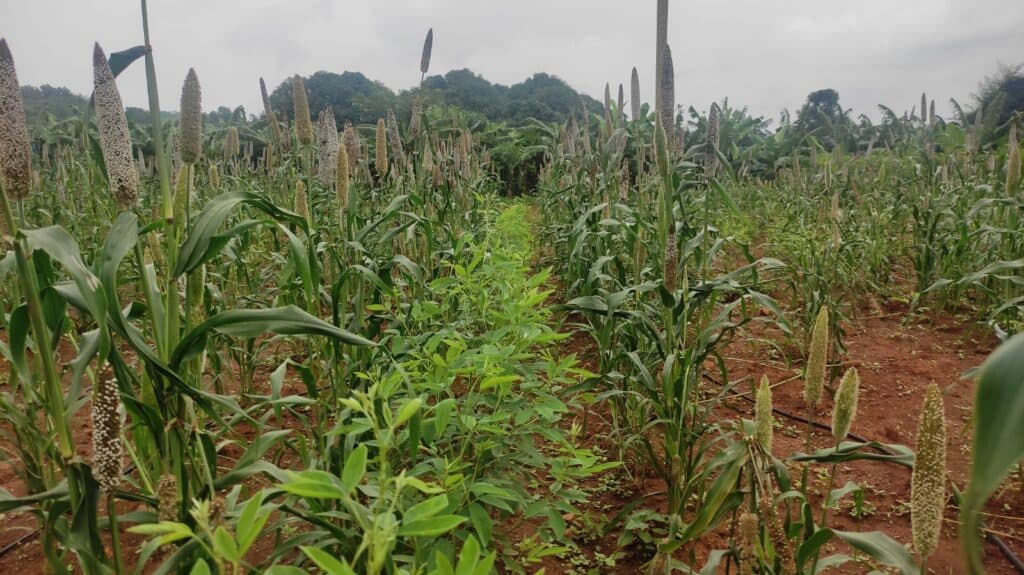Table of Contents
How to grow Millet:
Millet is a crop that has been gaining increasing recognition for its nutritional value and adaptability. From its humble beginnings as a staple food in ancient civilizations to its current status as a trendy and nutritious grain, millet has indeed come a long way. In this comprehensive guide, I will delve into the secrets of millet cultivation, uncovering the techniques that can help you achieve a bountiful harvest. Whether you’re a seasoned farmer or a curious beginner, this article will equip you with the knowledge needed to unlock the potential of millet growth.
Millet is a collective term for a variety of small-seeded grasses that belong to the Poaceae family. There are nine types of millets grown in India. Among them, the major millets are Pearl Millet, Sorghum, and Finger Millet, and the rest 6 millets fall in the category of minor millets. These ancient grains have been an integral part of human civilization for thousands of years.
One of the key reasons for growing millet is its impressive nutritional profile. Millet is rich in essential nutrients such as carbohydrates, dietary fiber, protein, and minerals like iron, magnesium, and phosphorus. Moreover, it is gluten-free, making it an excellent choice for individuals with celiac disease or gluten sensitivities.
Furthermore, millet holds significant historical and cultural importance. It has been cultivated by diverse societies throughout history, including ancient civilizations like the Egyptians and the Chinese. For centuries, millet has fueled communities and acted as a vital source of sustenance.
Preparing for Millet Cultivation:
Before embarking on your millet-growing journey, it is crucial to select the appropriate millet variety based on your climate and soil conditions. Different millet species have specific environmental preferences, including temperature ranges and soil pH levels.
You can look into the Millet Map of India and figure out which millet grows where in India.

Once you have identified the ideal variety, it’s time to consider the optimal planting conditions. Millet thrives in well-drained soil and requires sufficient sunlight for successful growth.
Obtaining quality millet seeds is of utmost importance. Look for reputable suppliers who provide certified seeds to ensure the best chances of success. You will not face any challenges in getting Pearl Millet, Sorghum, and Finger Millet. For minor millets, you may contact the research centers or the farmers who are conserving the traditional varieties or millet landraces.
Creating Ideal Growing Conditions:
Preparing the soil is a crucial step in achieving optimal millet growth. To create a favorable environment, start by removing any weeds or debris and perform soil tests to analyze nutrient content. Based on these results, you can then amend the soil accordingly, adding organic matter or fertilizers to optimize its composition.
Planting Millet:
The spacing and depth requirements for millet seeds vary depending on the specific variety. Generally in the case of minor millets, 25-30 cm (row to row), 8-10 cm (plant to plant) is preferred. The seeds should be planted 2-3 cm in depth for proper germination. But in the case of Pearl Millet and Sorghum, 60 cm row to row and 15-20 cm from plant to plant. These measurements may differ slightly for different millet varieties, so refer to the seed packaging or consult with local agricultural experts for specific recommendations.
In my previous trials on millets cultivation, transplanting gives more yield as compared to direct sowing. We can go for transplanting in Finger Millet, Little Millet, and Barnyard Millet.
If you are planning for transplanting, you need to raise nursery beds.
For a better understanding of how to grow millet, here I am sharing the best agronomic practices of millets.
Intercropping of Millets with Pulses:
Millets and pulses combination is not only good on plates but also in the farmers’ fields.
In the realm of sustainable agriculture, intercropping has emerged as a powerful practice that forges a symbiotic relationship between millets and pulses. This strategic agricultural pairing not only contributes to increased agricultural productivity but also offers a range of environmental and nutritional benefits, ultimately enhancing the well-being of farming communities.
Intercropping millets with pulses represents an ingenious agricultural synergy that goes beyond mere coexistence in the same field. This dynamic partnership yields multiple advantages, benefiting both crops and the soil they grow in.

1. Soil Health Enhancement:
One of the primary benefits of intercropping millets with pulses is the improvement in soil health. Pulses, such as lentils, chickpeas, and pigeon peas, are renowned for their nitrogen-fixing capabilities. These leguminous plants have a unique ability to capture atmospheric nitrogen and convert it into a form that can be absorbed by plants. As a result, they enrich the soil with vital nutrients, particularly nitrogen, which is crucial for crop growth.
2. Improved Nutrient Content:
The co-cultivation of millets and pulses leads to nutrient complementarity. Millets, with their impressive nutritional profile, are rich in essential vitamins and minerals, while pulses provide an excellent source of protein and additional micronutrients. This harmonious blend not only augments the overall nutritional value of the crops but also enhances dietary diversity for farming communities. The combination of millets and pulses ensures access to a balanced diet, promoting better health outcomes.
3. Pest and Disease Management:
Intercropping offers a natural defense mechanism against pests and diseases. The diversity of crops in a single field disrupts the habitat and life cycle of specific pests, reducing the risk of infestations. Additionally, the compounds released by one crop can deter pests that may otherwise harm the other, creating a mutually protective environment.
4. Enhanced Crop Resilience:
Intercropping enhances the resilience of crops to environmental stressors. In the face of adverse weather conditions, such as drought or excessive rainfall, the diverse crop system is better equipped to adapt and thrive. This resilience minimizes the risk of crop failure, which is vital for the livelihoods of farming communities.
5. Economic Benefits:
For farmers, intercropping is not only about boosting agricultural yields but also about increasing income. The combined cultivation of millets and pulses can offer diversified income sources, as these crops have different maturation periods, allowing for staggered harvesting and continuous market access.
Author: Tapas Chandra Roy, A Certified Farm Advisor on Millets, ‘Promoting Millets from Farm to Plate’ and an Author of the book -” Millet Business Ideas-Empowering Millet Startups”. In a mission to take the forgotten grains- Millets to Millions. To remain updated on my blogs on Millets please subscribe to my newsletter and for any queries please feel free to write to [email protected]

